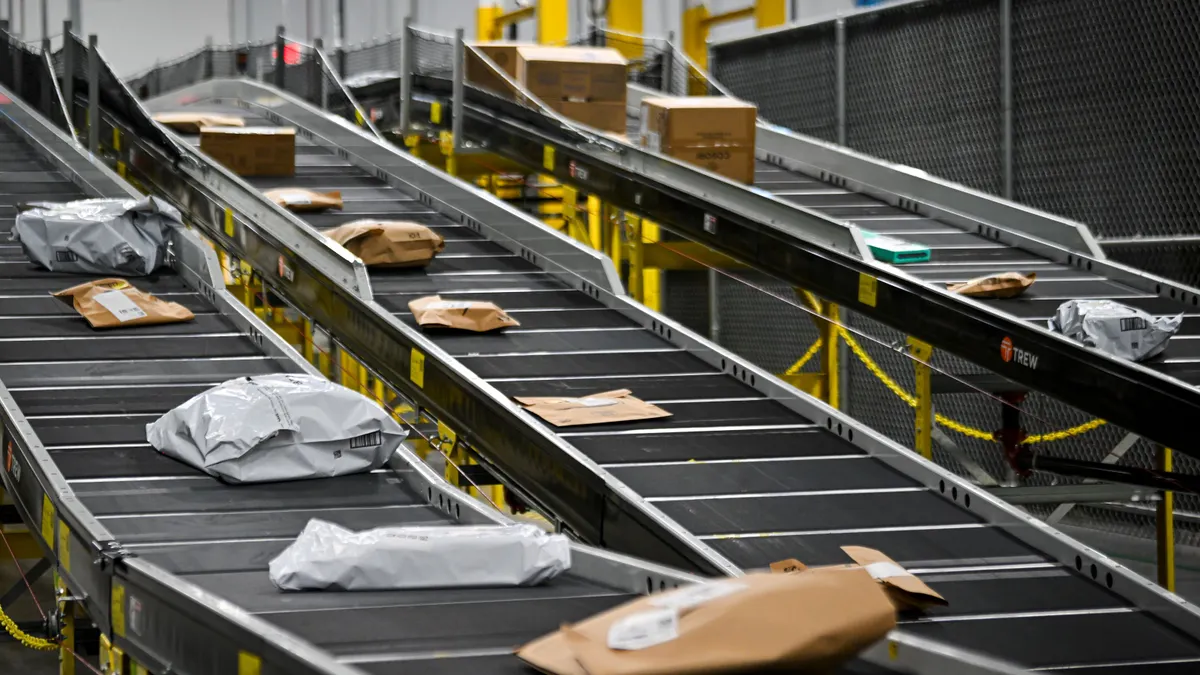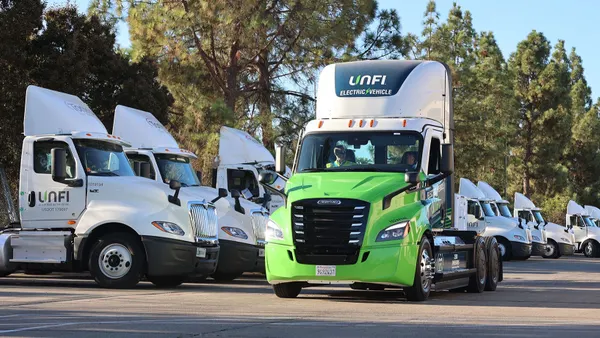Dive Brief:
- Walmart cut unit costs by 20% year over year reduction with its next-generation automated fulfillment centers compared to manual sites, according to John Furner, president and CEO of Walmart US.
- By the end of 2025, the retailer expects automated centers will drive an over 30% improvement in cost reduction across its network, Furner said at an April 10 investor meeting.
- “Importantly, whether it's e-commerce or perishable centers or the regional centers, we are very convicted and confident that the model we built with those centers is very scalable,” Furner said. “And so, the pace is exciting, and all the networks were going as fast as we can go.”
Dive Insight:
Walmart is continuing to grow its automated supply chain facility footprint in an effort to improve inventory flow and operational decision-making.
Currently, more than half of the company’s distribution centers are undergoing an automation retrofit, Furner said during the investor meeting. By the end of this year, the retailer expects 65% of its stores to receive merchandise from high-tech distribution centers, according to an October email to Supply Chain Dive
Last year, the company installed automation technology at two regional distribution centers in Arizona and its home state of Arkansas while drastically beefing up use of the technology within its grocery distribution network. It also started operating automated forklifts at distribution centers in Florida, Texas, New York and Alabama.
Beyond cost savings, accuracy and speed are two of the primary benefits Walmart is seeing from its automation efforts, according to Furner.
The automation benefits extend to Walmart’s efforts to accelerate its e-commerce business as well, with more than half of customer deliveries flowing through its high-tech distribution centers, Furner added.
The company is also in the early stages of deploying agentic artificial intelligence, per Furner. These digital agents can mimic the complex environments in the company’s stores and supply chain to aid in decision-making. In doing so, they can help Walmart understand local level demand and shorten deployment times, Furner said.















